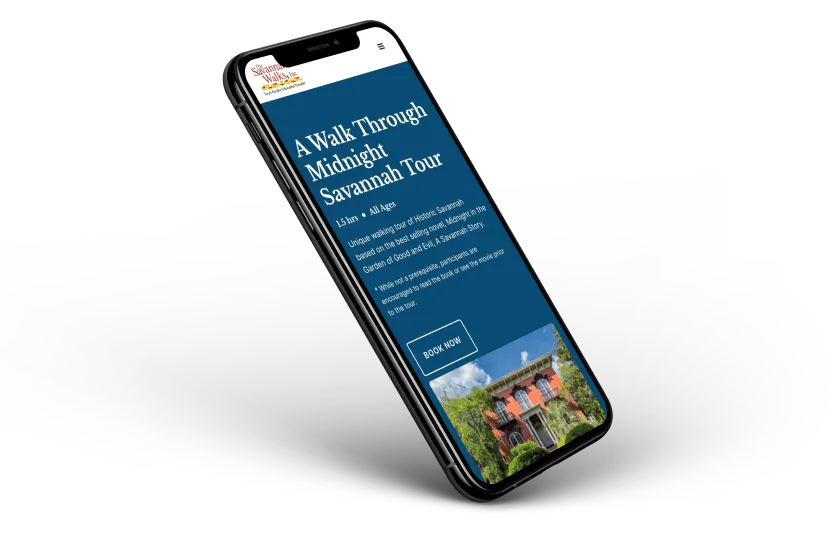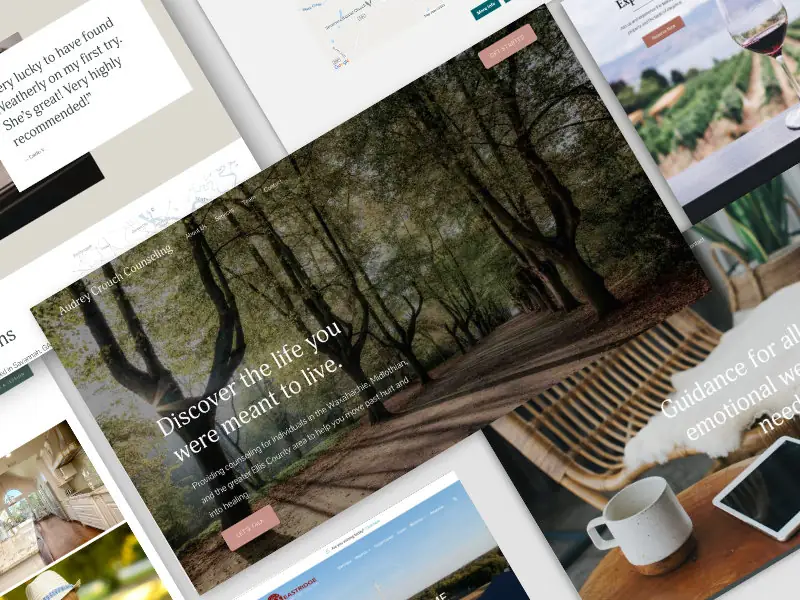Business
Don't Forget Your Own Website - 4 Lessons
.avif)
Don't forget your own website. If you are in a client based business, like web design and development, or really any client based business for that matter, it is easy to forget about your own business. You are busy serving your client, making sure everything is just right for them. The next thing you know, your own marketing and digital presence is suffering.
I've seen it time and time again. Clients haven't updated their website in 9+ years. Events are being promoted that took place last week, month, or even year. Their services don't reflect current pricing or offerings. I've seen it and I've experienced it myself.
They say that a mechanics car is often in disrepair, even though he has the knowledge, tools, and means to fix it. The same can be true of a web designers website. My site wasn't terrible by any means, but it had been neglected. I had let myself get away with practices I don't let my clients get away with.
But last week, I found the motivation to dive deep into my website. It started with a review by a fellow web designer, Evgenii Tilipman. He was kind enough to review my website. I also attended a portfolio training by Payton Clark Smith for his new community that I'm a founder in - Pait Pro. Both Evgenii's and Payton's feedback was super helpful and motivating.
Not only did I rework my own portfolio, but I kept going. I reworked most of my website.
What did I learn about redesigning and reworking the copy on my own website?
1. Every page needs a focus.
Your H1 and Title tag should drive the focus of your page. Each section should be connected to your main idea in some way. If you can't connect a section to your main idea, leave it out or build out another page altogether. Maybe that idea should be the focus of an entirely new page.
2. Sections should compliment and flow from one another.
As I read back through my site, I realized this was one of my main struggles. Several sections were delivering the same message in slightly different ways. Instead of complimenting one another they were competing. As well as they weren't continuing the main idea from point 1.
I reworked the copy to better lead visitors through the page and cut everything else that was extraneous. It was tough getting rid of sections I had worked hard to craft, but in the end it was worth it. The site is more fluid and cohesive, rather than choppy and mix messaging.
3️. Focus on SEO optimization but not at the detriment of readability.
I had become too focused on getting all my keywords (main, short, and long tail) on the page. I wasn't paying attention to how everything flowed together or if I had already said that same thing in a slightly different way.Yes, focus on SEO optimization, but make sure the content is readable. Google might increase your rankings (I had been moving up in the rankings so I thought nothing was wrong), but that doesn't mean your site will convert.
If your users aren't met with a cohesive well structured page that leads them to your call to action, they won't convert into a lead and potentially a customer.
All that is not to say that you should throw all your hard SEO work out the window. I sure didn't. I have worked hard to get certain pages to rank in the top 10 for certain keywords. Instead of throwing them out and starting fresh, I used the same keywords I had started ranking for, but I rewrote all the content around them. Yes, it was a chore, but I believe it is going to pay off in the long run. Not only will my pages be easier to read, they will also be better optimized. Google ranks a website and web page on a number of factors. One of those factors is search intent. By better structuring my content around intent, I believe I will actually rank higher.
Focus on SEO but also focus on readability and search intent.
4. Look at your competitors.
Tools like SEMrush allow you the opportunity to discern your competitors strategies. When you see something working for them, go look at how things are structured. How the page is setup. What they are highlighting and how they are doing it.
It is important you don't copy them. I'm not advocating you steal their page and make it yours. Rather, I'm saying look at their strategy and utilize portions of it that will work for you.
I have personally gained a lot of insight and have made my pages better by looking at my competitors pages. Tools like SEMrush will definitely help and keep you from stabbing in the dark. But you can also run a quick search in google to find out who your competitors are. Just type “related:[your URL website]” in the search box. This may or may not work for your site. It generally works best for those sites that are larger. But it can't hurt to give it a try.
You can also just type in your keyword and your location. For me it is: Web Designer Dallas TX or another city in the metroplex. That will bring back competitors in my area. I can then go to their website and see what strategies they are employing to rank on the first page of Google.
Conclusion
Don't get so focused on your clients' that you forget your own web presence. It is the first place people will go to checkout your work and what you offer. You need to make sure it is primed and ready to convert.
👉 If your website is in need of a redesign, let's talk📱. I'd love to help you out. Give me a call 706-338-6155 or send me an email casey@clcreative.co to start the conversation.
Remember, don't forget your own website!
End to End Webflow Design and Development Services
From Web Design and SEO Optimization to Photography and Brand Strategy, we offer a range of services to cover all your digital marketing needs.

Webflow Web Design
We design custom Webflow websites that are unique, SEO optimized, and designed to convert.
Webflow Maintenance
Gain peace of mind knowing that a Webflow Professional Partner is maintaining your website.

Claim Your Design Spot Today
We dedicate our full attention and expertise to a select few projects each month, ensuring personalized service and results.






